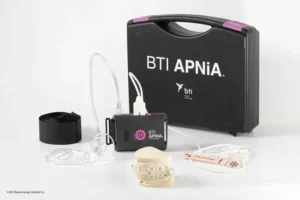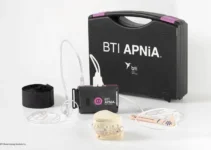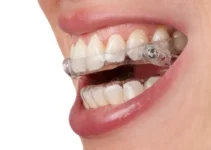Exploring the latest advances in sleep apnea treatment can be crucial for improving quality of life. This article delves into new and emerging therapies, focusing on innovative technologies and methodologies that are setting new standards in the management of this common sleep disorder. From wearable devices that monitor breathing patterns to cutting-edge surgical interventions, learn how these new treatments are providing hope and relief to millions suffering from sleep apnea.
Understanding Sleep Apnea and the Need for New Treatments
Sleep apnea is a common yet serious sleep disorder that affects millions of people worldwide. Individuals with sleep apnea experience repeated interruptions in their breathing during sleep, leading to poor sleep quality and a host of other health issues. The need for new treatments arises as traditional methods may not be effective for everyone. Understanding this condition is crucial for developing better therapeutic approaches.
It is essential to explore the underlying mechanisms of sleep apnea and its impact on the body. Research is ongoing to determine more effective ways to diagnose and treat the condition. As awareness grows, the demand for innovative therapies that can cater to a broader range of patients becomes more pronounced.
What is Sleep Apnea?
Sleep apnea is characterized by pauses in breathing or periods of shallow breathing during sleep. These pauses can last from a few seconds to a few minutes and can occur 30 times or more an hour. Typically, normal breathing then starts again, sometimes with a loud snort or choking sound. The most common types of sleep apnea are obstructive sleep apnea (OSA) and central sleep apnea (CSA).
– Obstructive Sleep Apnea (OSA): This type occurs when the muscles in the throat relax excessively, blocking the airway. It is the more common form of sleep apnea.- Central Sleep Apnea (CSA): This type happens when the brain fails to send the correct signals to the muscles that control breathing.- Complex Sleep Apnea Syndrome: Also known as treatment-emergent central sleep apnea, it is a combination of obstructive and central sleep apnea.
Diagnosing sleep apnea generally involves a detailed medical history, physical examination, and a sleep study known as polysomnography. Early diagnosis and treatment are crucial to mitigate its impact on long-term health.
Common Symptoms of Sleep Apnea
The symptoms of sleep apnea can vary widely among individuals, but some of the most common signs include:
- Loud snoring: Often the most noticeable symptom, usually more pronounced in obstructive sleep apnea.
- Episodes of breathing cessation: Witnessed by another person, these are interruptions in breathing during sleep.
- Gasping for air during sleep: This can result in frequent awakenings throughout the night.
- Excessive daytime sleepiness: Feeling very tired during the day due to interrupted night’s sleep.
- Morning headache: Resulting from poor oxygenation and sleep fragmentation.
- Difficulty concentrating: Poor sleep quality can impact cognitive functions.
Other symptoms may include insomnia, mood changes like depression or irritability, and waking up with a dry mouth or sore throat. These symptoms, if persistent, warrant a medical consultation for further evaluation and diagnosis.
Why Traditional Treatments May Not Work for Everyone
Traditional treatments for sleep apnea include Continuous Positive Airway Pressure (CPAP), dental appliances, and lifestyle changes. While effective for many, these treatments may not be suitable for all patients. CPAP, for instance, is often considered the gold standard but can be cumbersome and uncomfortable for some.
Some individuals may find it challenging to adapt to CPAP therapy due to discomfort, noise, or claustrophobia. Compliance issues can lead to ineffective treatment and persistent symptoms. Dental appliances, though beneficial for mild to moderate OSA, may not be effective for severe cases or those with specific anatomical challenges.
Additionally, lifestyle changes such as weight loss, exercise, and avoiding alcohol or smoking are recommended but require considerable commitment and may not provide immediate relief. Therefore, there is a significant need for novel and personalized treatment options to address the limitations of current therapies.
Exploring the latest advancements in sleep apnea treatment can lead to discovering more effective and patient-friendly solutions. Stay tuned for more articles that delve deeper into new therapies and innovations in the field of sleep medicine.
Innovative New Sleep Apnea Treatments
Sleep apnea is a common and potentially serious sleep disorder in which breathing repeatedly stops and starts. The condition can lead to poor sleep quality and various health complications. Innovative treatments are continually being developed to help individuals manage this condition more effectively. In this article, we will explore some of the latest advancements in treating sleep apnea.
By understanding these innovative new treatments, patients can make more informed decisions about their health and well-being. The following sections will delve into positional therapy, alternative CPAP machines, and surgical options. Each of these approaches offers unique benefits and could be a suitable option depending on the severity of the condition and the patient’s specific needs.
It is important to consult with a healthcare professional to determine the best treatment for your particular case of sleep apnea. Now, let’s take a closer look at these innovative new treatments.
Positional Therapy
Positional therapy is a straightforward and effective method for individuals whose sleep apnea is more pronounced when lying on their back. This treatment involves the use of certain devices or techniques to encourage sleeping in a side position, thereby reducing airway blockage. A number of studies have shown that positional therapy can significantly reduce the number of apnea events in patients with positional obstructive sleep apnea (POSA).
One common device used in positional therapy is a positional pillow or bumper belt, which prevents the sleeper from rolling onto their back. Another innovative approach includes the use of vibrating devices that are worn around the neck or chest; these devices gently vibrate when the user starts to sleep on their back, prompting them to change position. For some patients, combining positional therapy with other treatments, such as Continuous Positive Airway Pressure (CPAP) or lifestyle changes, can lead to even better outcomes. Consistent use over time can help retrain the body to prefer sleeping on the side, ultimately leading to long-term relief from sleep apnea symptoms.
Alternative CPAP Machines
While Continuous Positive Airway Pressure (CPAP) machines are the most commonly prescribed treatment for sleep apnea, they are not suitable for everyone. Some individuals find them uncomfortable or have difficulty adhering to their use. Fortunately, advancements in CPAP technology have led to the development of alternative machines designed to enhance comfort and compliance.
One such innovation is the Auto-CPAP (APAP) machine, which automatically adjusts the pressure levels throughout the night based on the user’s breathing patterns. This can result in a more comfortable and personalized treatment experience. Additionally, Bi-level Positive Airway Pressure (BiPAP) machines offer different pressure settings for inhalation and exhalation, which can be particularly beneficial for patients with high pressure needs or comorbid conditions like chronic obstructive pulmonary disease (COPD).
Moreover, smaller and quieter CPAP machines have been developed, making them more travel-friendly and less intrusive. These portable CPAP devices help encourage adherence by providing convenience and ease of use. Patients who experience discomfort with traditional CPAP masks can also explore a range of customized mask options designed to fit different face shapes and sleeping styles.
Surgical Options
For patients who do not respond well to non-invasive treatments, surgical options may be considered. Surgery aims to remove or modify the tissues that block the airway during sleep. There are several surgical procedures available, each tailored to address specific anatomical problems. One common procedure is Uvulopalatopharyngoplasty (UPPP), which involves removing excess tissue from the throat to widen the airway. Another option is maxillomandibular advancement (MMA), a more extensive surgery that repositions the upper and lower jaw to increase the space in the airway.
Additionally, newer, less invasive surgical techniques are gaining popularity. Inspire therapy, for example, involves the implantation of a small device that stimulates the hypoglossal nerve, which controls the tongue muscles. This stimulation helps keep the airway open during sleep. Radiofrequency ablation and laser-assisted uvulopalatoplasty (LAUP) are other minimally invasive procedures that reduce tissue volume using heat or laser energy.
It is vital for patients to discuss the risks and benefits of surgical treatments with their healthcare provider, as these procedures are usually considered when other treatments have failed or are not suitable.
In conclusion, the landscape of sleep apnea treatment is continually evolving, offering patients multiple innovative options to manage their condition effectively. Whether it’s through positional therapy, advanced CPAP machines, or surgical interventions, there is hope for improving sleep quality and overall health. For more information on the latest advances in sleep apnea treatments and other related topics, feel free to explore our other articles.
How to Choose the Right Sleep Apnea Treatment
Choosing the appropriate therapy for sleep apnea is crucial for improving quality of life and preventing serious health complications. With several treatment options available, it’s essential to understand that there is no one-size-fits-all solution. In this article, we will explore the important steps and factors to consider when determining the best treatment for sleep apnea.
Sleep apnea is a condition that can lead to significant health issues if left untreated, such as cardiovascular diseases, metabolic disorders, and impaired cognitive function. Therefore, timely and effective treatment is crucial. By consulting with a healthcare professional and considering various factors, patients can make informed decisions about their treatment plans.
Consulting with a Sleep Specialist
One of the first steps in choosing the right sleep apnea treatment is to consult with a sleep specialist. These professionals are equipped with the knowledge and expertise necessary to diagnose and recommend appropriate treatments. A sleep study, also known as polysomnography, is often conducted to determine the severity of sleep apnea.
A thorough evaluation by a specialist can help to identify underlying causes and the most suitable treatment options. This may include Continuous Positive Airway Pressure (CPAP) therapy, oral appliances, or lifestyle modifications. A specialist can also provide valuable insights into the pros and cons of each treatment, making it easier for patients to make informed decisions.
Factors to Consider
When selecting a treatment for sleep apnea, there are several factors to consider. These include the severity of the condition, patient preference, and any existing health issues. Some patients may respond better to certain treatments than others, making it important to tailor the approach to individual needs.
- Severity of Sleep Apnea: Mild cases may be managed with lifestyle changes, while moderate to severe cases might require more intensive therapies like CPAP or surgery.
- Patient Compliance: The effectiveness of treatment heavily relies on how consistently a patient can adhere to it. For example, CPAP therapy is effective but can be uncomfortable for some, affecting compliance.
- Health Conditions: Co-existing conditions such as heart disease, obesity, and diabetes must be taken into account when selecting a treatment.
Additionally, personal preferences and lifestyle can play a significant role. Some individuals may prefer less invasive options such as positional therapy or oral appliances, while others may opt for surgical interventions for a more permanent solution.
Long-term Efficacy and Safety
The long-term efficacy and safety of sleep apnea treatments are vital considerations. Continuous Positive Airway Pressure (CPAP) therapy has been proven to be highly effective in managing sleep apnea symptoms and improving overall health. However, its long-term use requires consistent compliance, which can be challenging for some patients.
Other treatments, such as oral appliances, have shown promising results but may not be suitable for everyone. Surgical options can offer lasting relief but come with inherent risks and a recovery period that must be carefully considered. Understanding the potential benefits and risks associated with each treatment option is essential for making an informed decision.
It’s also crucial to monitor the effectiveness of the chosen treatment over time, as the severity of sleep apnea may change. Regular follow-ups with a sleep specialist can help to adjust the treatment plan as needed, ensuring that it remains effective and safe in the long term.
In conclusion, selecting the right sleep apnea treatment requires a comprehensive approach that takes into account various factors, including consultation with a sleep specialist, individual patient needs, and long-term efficacy and safety. By staying informed and working closely with healthcare professionals, patients can achieve better sleep and overall health.
For more information on sleep apnea and related treatments, be sure to check out our other articles.
Common Questions About New Sleep Apnea Treatments
If you’re exploring the latest options for managing sleep apnea, you may have some questions about how they work and who can benefit. Below is a frequently asked question regarding new treatment avenues for sleep apnea.
What are the latest advancements in treating sleep apnea?
Recent developments in sleep apnea treatment include the use of adjustable airway stimulation devices, improvements in CPAP machine technology, and minimally invasive surgical options. Adjustable airway stimulation devices work by sending mild stimulation to nerves that control airway muscles, keeping them open throughout the night. Advanced CPAP machines now are more comfortable and quieter, significantly improving user compliance. Additionally, new surgical techniques, which are less invasive and have shorter recovery times, are increasingly becoming an option for those who do not respond well to conventional treatments.

My name is Salman Kapa, a 73-year-old expert in bone regeneration and dental implantology. With decades of experience in the field, I am dedicated to advancing our understanding of oral health and hygiene. Through my research and writing, I aim to contribute to the development of innovative solutions in dental care.




